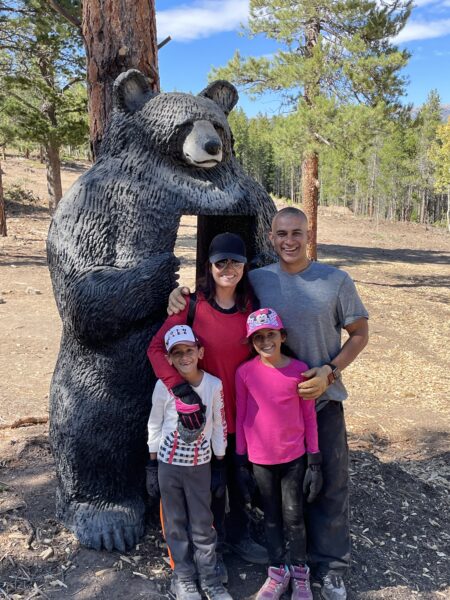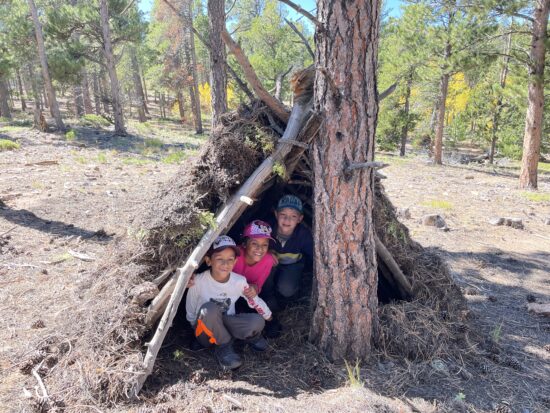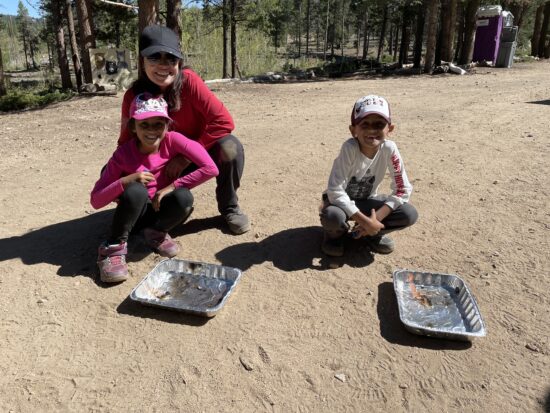
Well, Andy Seth, his family, and friends sure will! You may remember Andy Seth as our accidental auctioneer at our Base Camp Bash fundraising event the past decade or so. Andy “won” a Cottonwood Institute Survival Day to head up to the mountains for the day and practice the Top 5 Things You Need To Know To Survive In Colorado.
We caravaned up to Wild Bear Nature Center in Nederland, CO to their beautiful property on the site of their future Nature Center. Here, we learned all about how to keep ourselves warm and toasty (and very much alive) if we got lost on a hike and had to survive the night.
After learning our survival priorities from the rule of 3’s – 3 hours without shelter, 3 days without water, 3 weeks without food – we split up into two teams: Mountain Lions – our energetic and brilliant kiddos – and Bears – our methodological and sagacious parents. Both teams presented a skit of their survival priorities and how they would survive the night. Well, the Mountain Lions really got into character and owned their skit and it was clear the Bears spent too much time at conferences for adults;) After the Mountain Lions’ rousing performance both teams agreed that warmth and shelter are the first step!
CI Instructors Ford Church and Jarrod Gaut then showed the group the fundamentals of building wilderness survival shelters out of natural materials. This included both building techniques and planning principles. We covered where to build shelters; how to account for natural resources like wood, debris, and water; and how to deal with natural obstacles, like wind direction and incoming weather!

But wait – as night falls, the temperatures drop rapidly! Will our lost families freeze?
Not if our friend fire has anything to say about it! Our families learned how all the points of the fire triangle (heat, oxygen, and fuel) work together to create efficient fires. Our teams processed dead grasses into very fine and soft clumps, and then added small twigs to help our fires “climb up a ladder” until they were big and strong. Or at least as big and strong as we could get them in our fire pans, as we were politely asked to keep our fires small at Wild Bear. Safety never sleeps, after all. Our intrepid survivalists used all sorts of different fire-starting methods, like lighters, matches, fire-strikers, and even bow drills! They also learned how to use fire-helpers like cotton balls swabbed with Vaseline and char-cloth.

And so our brave families survived to hike another day! …..But could you?
Of course, our families weren’t actually lost… so instead we feasted on delicious snacks and sandwiches and cleaned up all of our day’s activities at the end to leave no trace of our fun day at Wild Bear!
Written by CI Instructor Jarrod Gaut. See more photos here!
